-
A few photos from Nanumea
-
Bidding farewell to Tuvalu
We are back on the move again an incredible few days on Nanumea, Tuvalu. From the sea it is harder to miss this atoll – the tower of the church, built in the 1930s, stretches high above the coconut tree line. It is no skyscraper but when you are used to coconut trees, coconut trees, and more coconut trees the building definitely stands out. At first we thought it was a lighthouse of some description, however upon closer inspection we realized the missionaries had left their mark. The island of around 600 people is separated into two villages (north of the church and south of the church). Meetings, dances, and sports are held in the center, immediately adjacent the church, and despite the size of the villages there is a buzz about the place. Kids screamed out, “palangi, palangi,” every time we visited the village, wearing huge smiles.
This sense of community ensures that even 280 nautical miles from the capital of Funafuti, (which is 600 nautical miles from Fiji and quite frankly in the middle of nowhere) – life does not really feel primitive or isolated. We wondered exactly this on our trip up from Fiji to Tuvalu. How disconnected do people feel living in a landmass that is separated by so much water? The answer is that they have each other, and for that reason the level of isolation experienced is relatively small. In fact one might feel more isolated alone in a big city, than in this island group surrounded by hundreds of miles of water.
Kivoli, (a lovely guy from Nanumea who we spent time with on the island), recounted a charming story remembering the first time he looked at a map. He said that it was the moment he realized how small Tuvalu was and how far away from everything they were. “Really, Tuvalu is here!” he exclaimed with humour in his voice. It is hard to imagine growing up and not knowing where you are on the map. Similarly, once upon a time the ancient seafarers set off on voyages, and thinking the world was flat, they never knew when they might fall off the edge. Now Confederate is blessed with such things as google imagery and gps, we know and record our latitude and longitude each hour (which right now is around 4 degrees south and incredibly hot). It is hard to figure out how the Polynesians that crossed oceans and settled in these remote Pacific islands managed to navigate. Then again life was different back then, they knew their stars, they looked to the birds to help them find land and the currents filled in the gaps.
Since his early years without maps, Kivoli has traveled the world aboard container boats, training at the Tuvalu maritime school. He had been to more countries than each one of us, after growing up in Nanumea and Nauru. His personality showed this juxtaposition between worldly seafarer and small island upbringing, recounting stories of both fishing knowledge passed down to him from his ancestors, and tales from various ports around the world.
We spent some awesome times with Kivoli, his wife and their grandson. They were extremely hospitable to us always asking us for meals knowing that supplies can be limited on a boat. We dined on fresh fish, chicken curry, chicken black bean, breadfruit chips, pancakes, and so on, at various times in their company.
After three weeks in Tuvalu it was hard to say goodbye. The place gets around 300 tourists per year, yet if it were more accessible we imagine there would be resorts everywhere. Both the lagoons we visited – Funafuti and Nanumea were insanely picturesque, an unbelievable mirage of turquoise goodness. The fish and bird life in Nanumea was better than we have seen anywhere so far. When we went paddle boarding we saw turtles, black tip reef sharks, heaps of fish, stingrays. When we traveled back to the boat at night huge schools of fish surrounded the dinghy jumping out of the water. On our last day, as a gift, we were given one of the 20 yellowfin tuna a local fisherman had caught that morning.
Nanumea has been a highlight – with its high church tower, from the sea it is hard to miss the place, but now that we have left, I fear, we may miss the place.
-
Anchored in Nanumea
I think I’ve said earlier that passage making is made up of a series of highs and lows….
The first two photos are of porpoises welcoming us to Nanumea island. We think they must have been porpoises not dolphins because of their size. These not so little guys were playing in the bow wake of the boat and looking up at us through the water. An incredible experience. It is times like this, when the serenity of being out on the water is the clearest. Having these majestic mammals swimming around the boat can only be described as a spiritual experience – where you feel completely connected to everything around you and totally in the moment. After 10 minutes watching I have to admit I folded and had to go inside and get the camera. BUT I’m glad I did so now we can relive the experience.
The other picture is Robin in the middle of the night in full wet weather gear – the first time since we sailed NZ to Tonga. After two days of beautiful sailing conditions, flat seas, and picture perfect skies along came one of our hardest nights with variable winds between 0 and 30 knots. If you know sailing you know that both sets of conditions are nothing special, but if they come in quick succession of each other it becomes a little trickier. At the end of my watch, which was filled with heavy rain showers, a local system came in and the wind jumped up quickly. We had the motor going to make sure we were making headway in light wind, and the main sail was up to help out. Anyway the wind came up so quickly that we didn’t have time to reef the main so I called Robin up on deck and we decided to turn the boat into a “hoave to” position so we weren’t healing so much under the 30 knots of wind and full sail. After a while we managed to reef (reduce) the main sail. In between figuring out the sails we managed to get a rope wrapped around the propeller and the engine stopped working. Of course at the time we didn’t know there was a rope around the propeller and thought it might have been a more serious problem with the engine. Once everything settled down we figured out that the spinnaker sheet (rope) was the culprit, but we would have to deal with it in the morning. So for the rest of the night we battled through 0-30 knot winds that were changing direction every 10 minutes. Fun times. Not much sleep. Of course everything fades into the background when you are happily anchored and looking back on it the experience was almost enjoyable? We were all up most of the night but Confederate handled everything really well and you only grow from such experiences. I feel happy in my sailing as a similar situation in New Zealand before we left would have made me very uncomfortable but this felt easily manageable. Oh yeah and at sunrise Robin managed to get the spinnaker sheet untangled without having to go in the water – bonus. We had an engine again! – which we definitely needed to get through the 20m wide passage, with 3 knots of current, and into Nanumea!
Nanumea is a spectacular lagoon and we are anchored in 6m of completely flat calm water. Now out to explore. Ye ha grandma. Life is gooood. Confederate clear.
-
Day 2 – Passage from Tuvalu to Kiribati
Not too much to report, trucking along at 3 knots in around 4 knots of wind so all is pretty relaxed aboard Confederate. Unfotunately I was so relaxed last night I overslept through 2 hours of my 4am-7am watch. When Robin tried to wake me apparently I said “Excuuuuse me” and rolled over and went back to sleep. Ooops. Luckily skipper has forgiven me as I made him some nice breaki.
 Still on target for arrival in Nanumea tomorrow morning.
Still on target for arrival in Nanumea tomorrow morning.Here’s a low res photo of our spinnaker run yesterday – beautiful!
-
Day 1 – Passage Tuvalu to Kiribati
Beautiful start to the passage with 5 knots behind us and the spinnaker pushing us along nicely. Dolphins swimming with the boat again this morning. No fish yet, but no complaints. We passed Nukufetau early this morning, although at no more than 3m high it has quickly disappeared from view.
Before we left Funafuti we were lucky enough to get permission to clear out of the country but visit the outer island of Nanumea on our way to Kiribati. We should arrive in Nanumea on Friday morning which will break up the trip to Tarawa nicely.
That’s all from Confederate today!
[publicisize off]
-
Touring Tuvalu
This is probably one of the most interesting places we’ve visited so far. The population is spread across 9 atolls with the majority living in Funafuti (4000 people). The people of Tuvalu have both hardships and blessings…
The hardships
1) With virtually no arable soil Tuvalu had to have soil shipped in from Taiwan so that it could grow vegetables.
We woke up at 430am on Friday morning to put our name on a list to get some vegetables. At 7am we returned and waited in line to choose our fresh produce. There seemed to be more than enough to go around and we have been enjoying the fresh eggplant, capsicum, lettuce, cucumber, spring onions and papaya the last couple of days. All in all, very impressive! It was a cool experience waking early and walking across the airstrip (yes where the plane lands twice a week) to go and grab our vegies. There is no security around the airstrip so it doubles as an exercise arena in the evenings and early morning (its far too hot in the middle of the day to think about moving, let alone exercising). Classic.
2) Remoteness
We sailed for 6 days from Fiji to get here, and we’ll sail for another 6 days to get to Tarawa, Kiribati the next closest center. Goods have to be shipped in from Australia and New Zealand and the ship isn’t always on time.
3) The island survives largely on aid money, remittances, and selling fishing permits.
4) A lot of that aid money passes through an extremely bureaucratic government, with hundreds of employees. In fact if you are employed in Tuvalu it is more than likely you will work for the government. The government radio has 20 staff, a NZ businessmen helping out mentoring in Tuvalu told me it could happily get by with 2 staff.
On the flipside from the perspective of yachties, getting into the country couldn’t have been simpler. First of all we didn’t pay to enter, there were no lengthy forms to fill and we weren’t met with 5 burly guys climbing aboard Confederate as in Tonga and Fiji.
5) Waste – also related to number 2, when you are a small remote island dealing with the waste from your many imports is a struggle, however we are told that this has improved significantly in the last few years – a photo just for you S.E Lottie

6) The atolls are surrounded by water abundant in fish life – while this is hardly a hardship, this fish life provides the backbone of the economy and is sold as fishing rights to other countries.
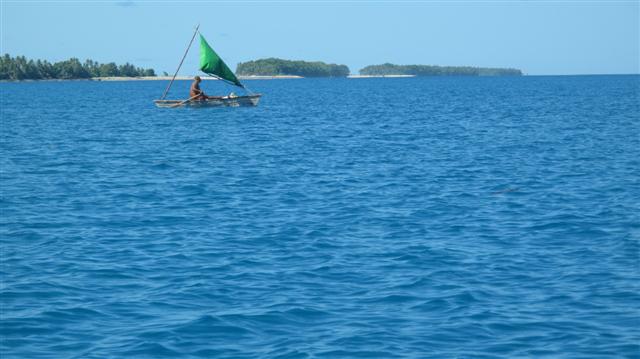
7) At no more than 3 metres high, sea level rise is said to be affecting Tuvalu. This makes the future uncertain, and we did see a lot of houses in low lying areas raised on stilts for periods of inundation.
The blessings – perhaps many of the hardships are blessings in disguise
1) Aid has visibly helped Tuvalu in the form of rainwater tanks which seem to have come from largely from Australian aid, and partly from the European union. There are also some other cool things going on such as the vegie garden and a milkfish breeding project.
2) While some might see those in Tuvalu lacking in opportunity, many have had the experience of working abroad. Many have visited family living in New Zealand.
3) Life is simple and surrounded by the ocean, kids swim every day before and after school.
4) This remote pacific island is much more developed than we anticipated. A generator provides 24 hour electricity, motorbikes are prevalent, roads extend from one end of the island to the other, there is a University, a hospital, a meteorological center, and a state run hotel.
5) As always people are embracing, warm hearted and friendly
We spent time with these lovely folk who are building another church on the island, as well as Seni below who weaved us some awesome native hats to get out of the Tuvalu sunshine. By the way we’re only 8 degrees south of the equator and it is HOTTTT.
6) The southern anchorage in Funufati lagoon is one of the nicest we’ve seen in our travels so far. This is a picturesque spot protected by a wide reef, azure waters, and plenty of fish life. A passage from the lagoon out to the ocean was filled with the largest reef fish we’ve seen.
We visited a small (5 person) village in the southern end of lagoon who graciously gave us coconuts and toddy, a sweet golden syrup like substance made from the only thing available on the island – the mighty coconut.
-
Landfall Tuvalu whoop whoop!
-
Passage Fiji to Tuvalu
We’re at the half way mark of the trip now and all is going great. Early on the 2nd day, with Fiji still in the distance we caught our biggest tuna. It was so big that the three of us couldn’t possibly have eaten it all, so we released the poor lil guy back into the ocean. Incidentally, we met a lady on the west coast of the south island who had been white baiting for many years. She told us that whenever they go out whitebaiting they always throw the first catch back, as an offering to the sea, and in turn the rest of the fishing is fruitful. She must be onto something as about 15 minutes after we’d thrown the tuna back we had pulled a really good sized wahoo on board. This is one of the best fish for eating in the area – whoop! So that has kept us full for the last couple of days with pan seared fish and salad, and fish burritos on the menu.
Robin was on the sunrise watch this morning and he woke me early to see a pod of around 10 dolphins swimming off the bow. They joined us for quite a while, playing in the waves. With a beautiful sunrise in the distance it’s fair to say that it was an incredible way to start to the day.
On night watch phosphorescence skidded across the sides of the boat, the stars were out, and the occasional cloud showed lightening in the distance.
Jonas our Italian crew is settling in well. There is talk of carbonara for dinner tonight, and he’s been helping me work on rolling my ‘rrrs’ so I can speak like an italiana or espanola!
The only thing missing from this trip so far is the WIND! The wind has ranged from 5-15 knots but generally we’ve been traveling slower than what we are used to. As we get closer to the equator it’s getting hotter and we took a dip over the side yesterday in the bluest of blue water. The clarity is ridiculous.
That’s all for now, here’s a few (low res) pics of life onboard during an ocean passage..
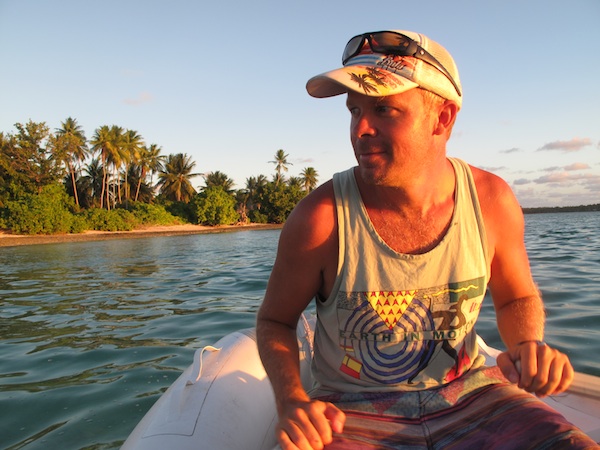
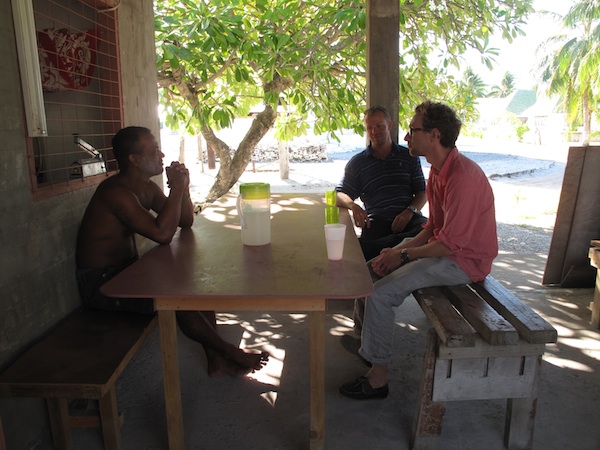
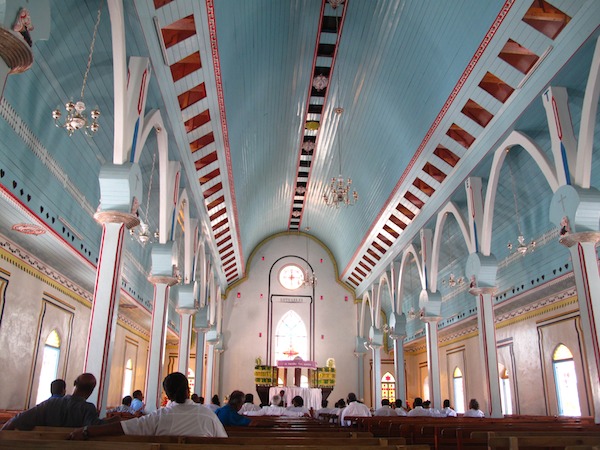
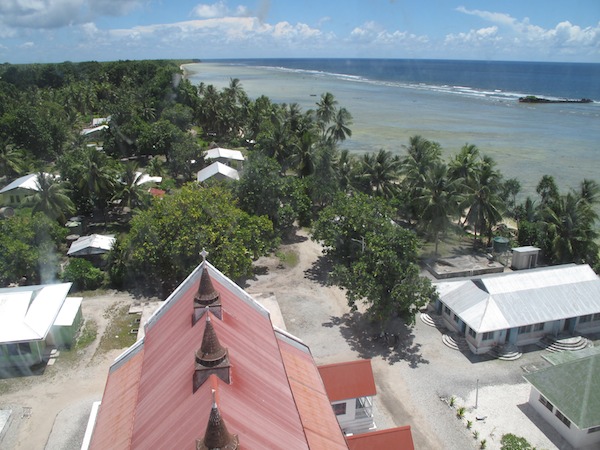
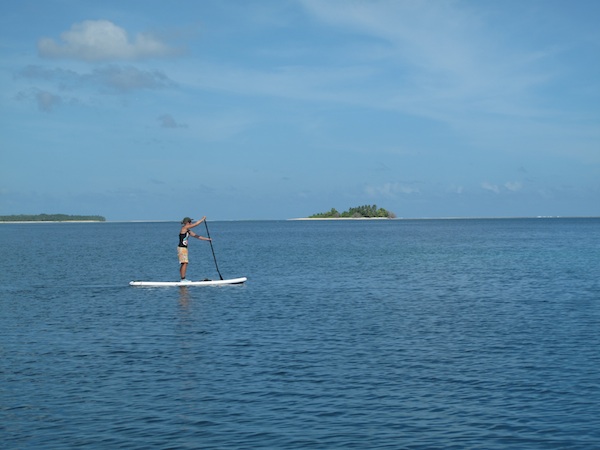
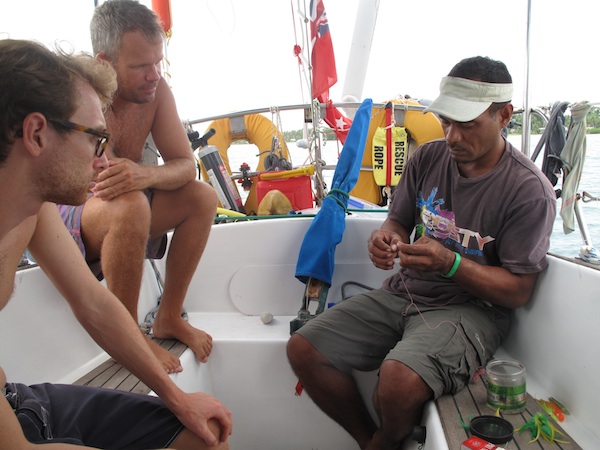
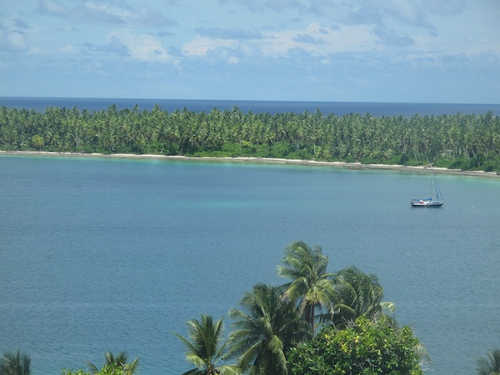
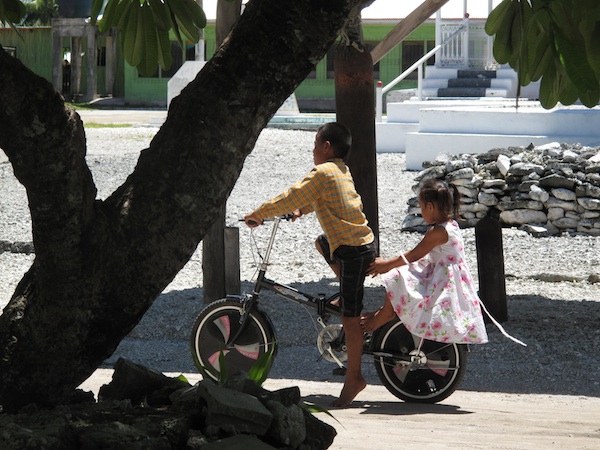
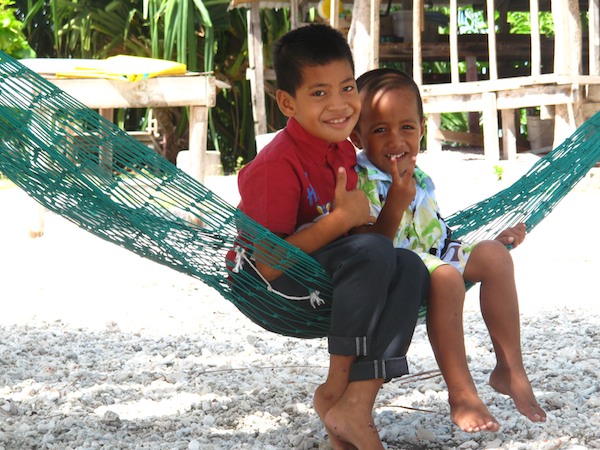
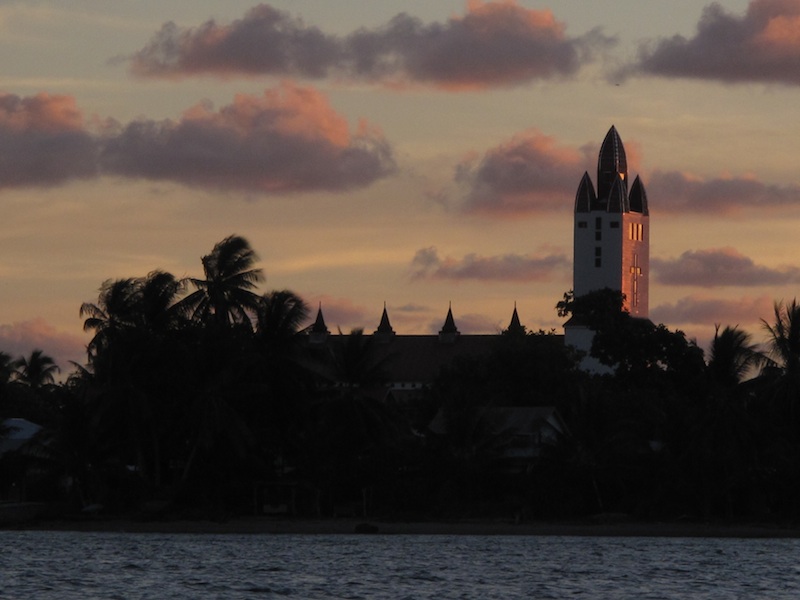
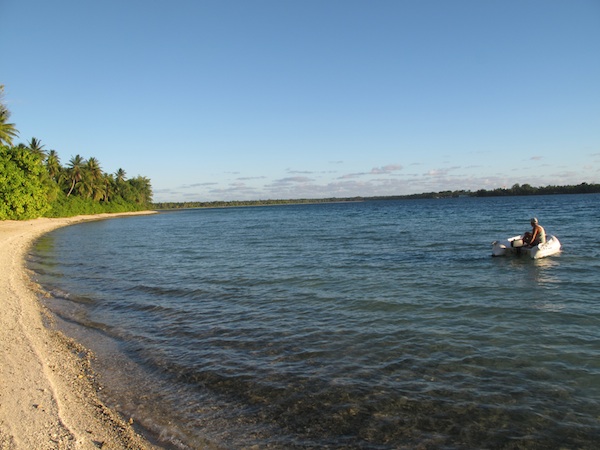
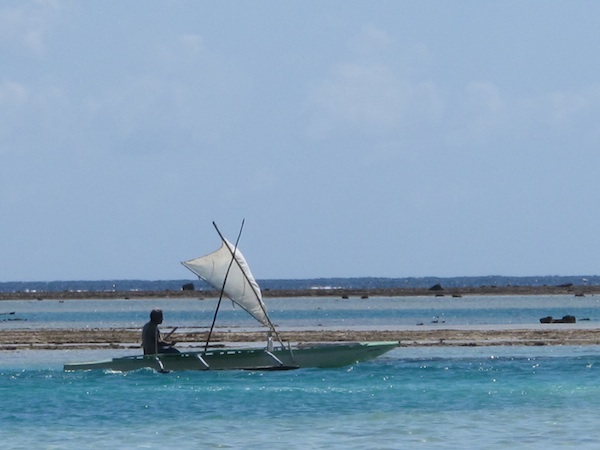
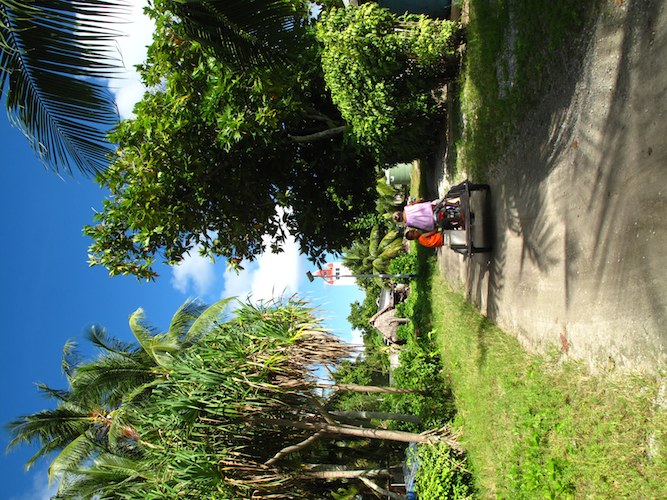
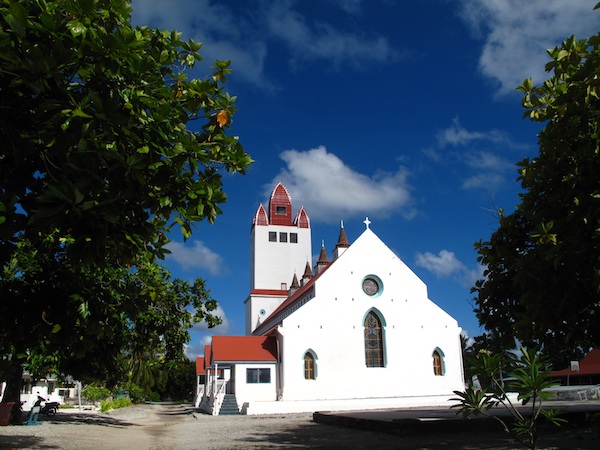
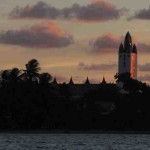
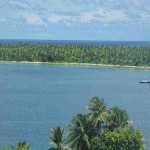
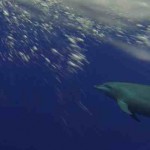
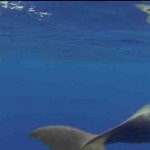
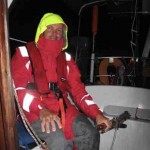
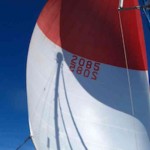
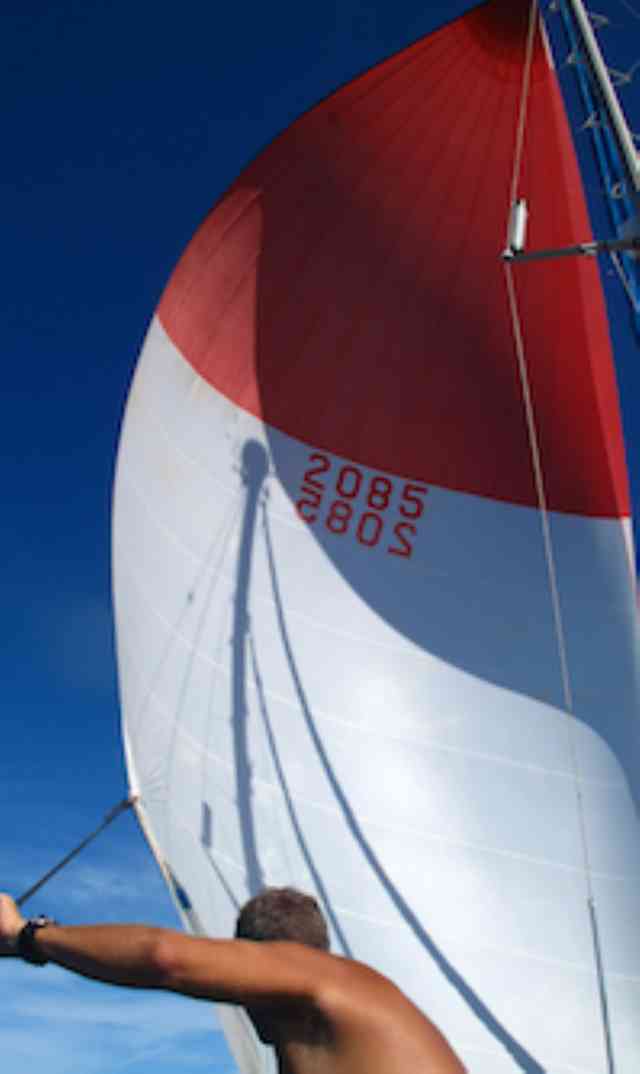

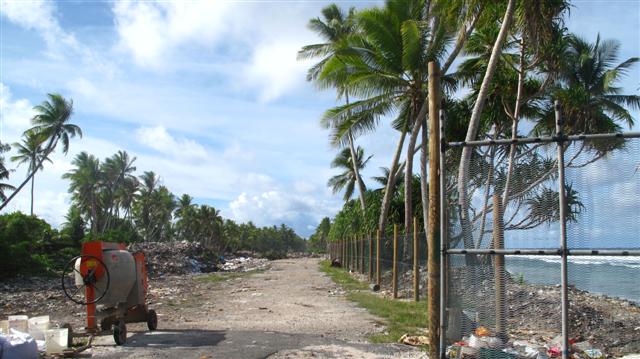
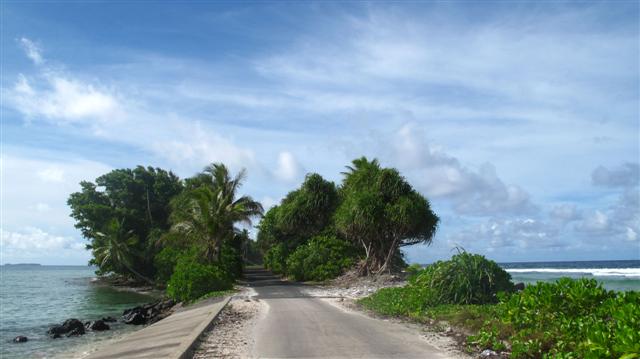
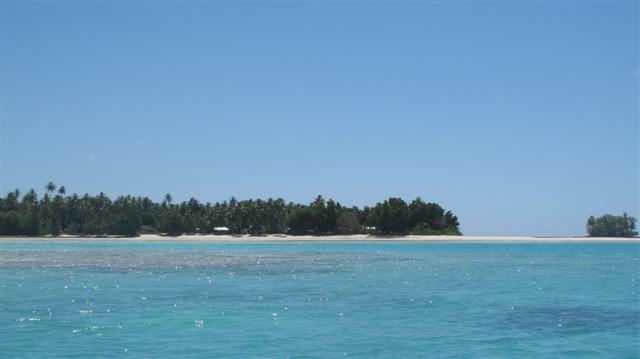
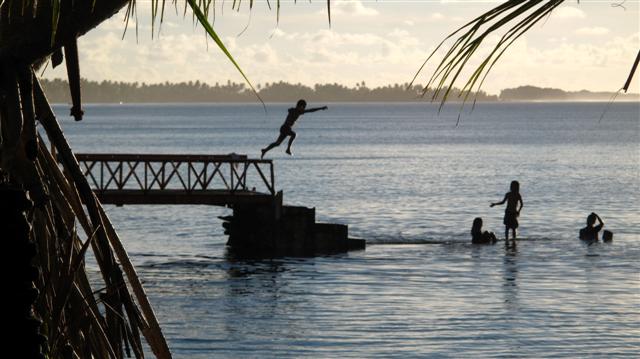
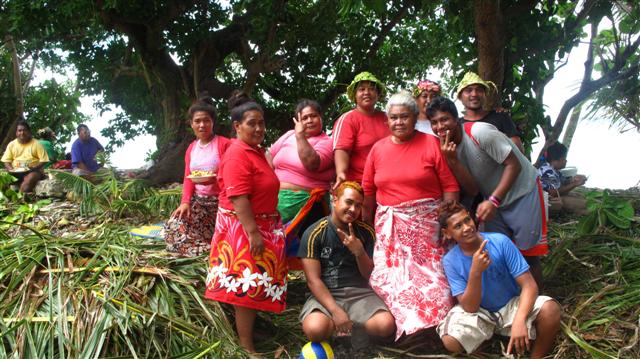
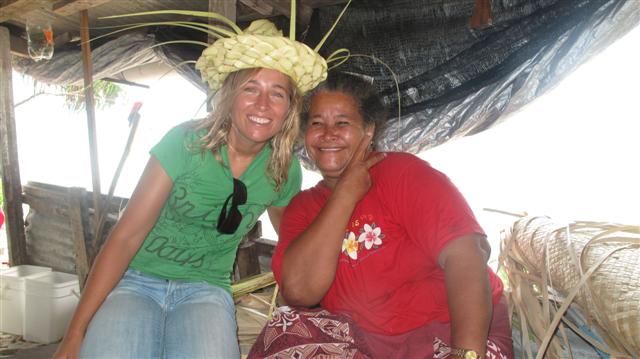
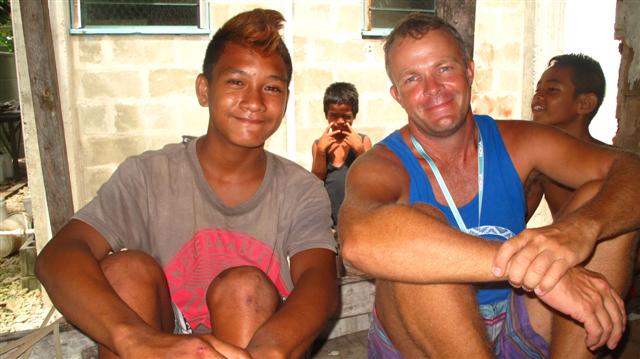
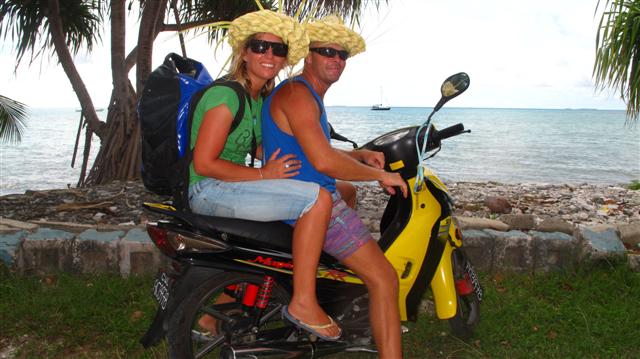
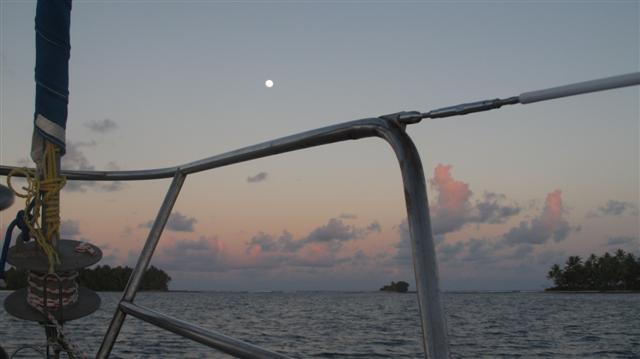
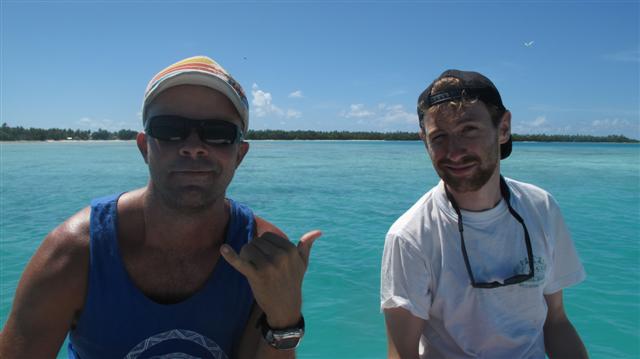
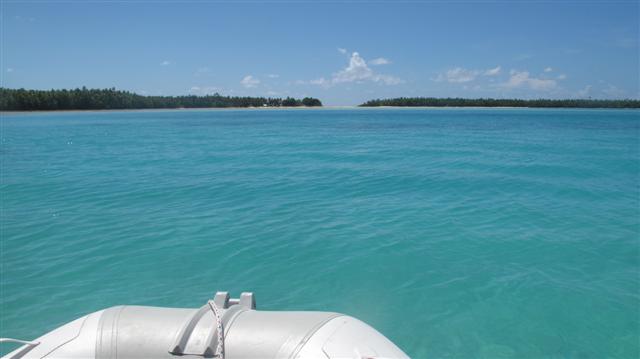














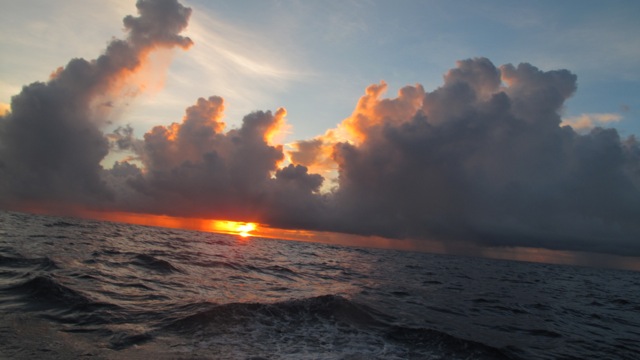



Recent Comments